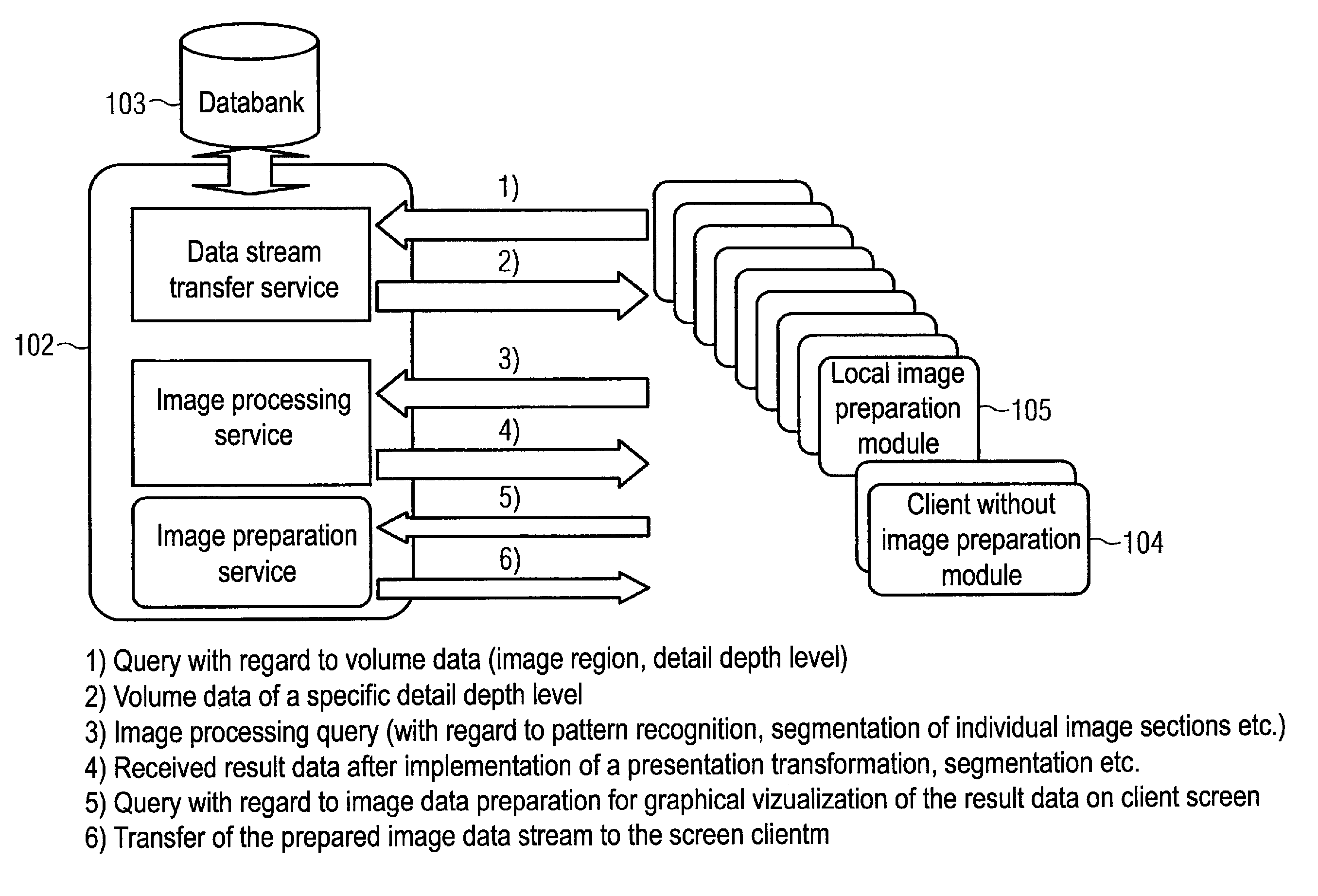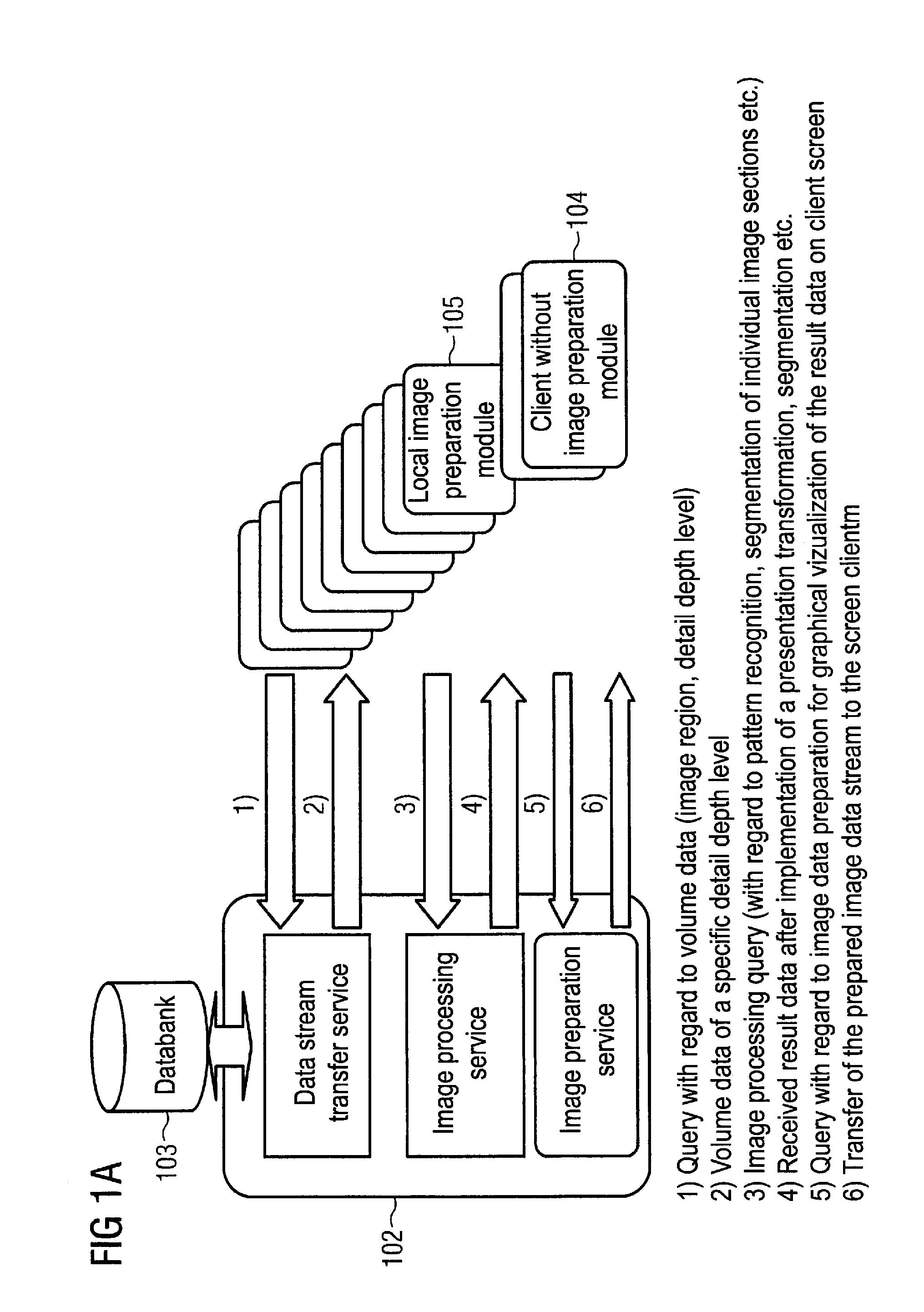Depth detail level adjustment of multi-dimensional image data with a client/server-based image rendering system
a multi-dimensional image data and depth detail technology, applied in the field of client/server-based image archiving, image retrieval and image rendering system for storage, retrieval and graphical visualization of multi-dimensional digital image data, can solve the problem of serious disruption of clinical workflow, negative effect of underlying hospital-internal data transfer network capacity, and inability to use the pacs system. to achieve the effect of reducing the degree of system utilization, reducing data traffic, and simplifying workflow
- Summary
- Abstract
- Description
- Claims
- Application Information
AI Technical Summary
Benefits of technology
Problems solved by technology
Method used
Image
Examples
Embodiment Construction
[0039] The system components of the inventive client / server-based image archiving, image retrieval and image rendering system and the steps of the associated inventive method are described below. Without limitation as to generality, the discussion is based on a server and a number of screen clients (also designated as client workstations) that communicate with one another via a data transfer network via a communication standard PACS. The present invention, however, is applicable not only to such a PACS system but also is generally applicable to client / server-based image archiving, image retrieval and image rendering systems and thus independent of the communication standard underlying the data transfer.
[0040] As shown in FIG. 1A, the inventive image archiving, image retrieval and image rendering system is constructed around a client / server architecture in which only one server 102 (which is responsible for the transfer of volume data to a plurality of screen clients 104) and its da...
PUM
 Login to View More
Login to View More Abstract
Description
Claims
Application Information
 Login to View More
Login to View More - R&D
- Intellectual Property
- Life Sciences
- Materials
- Tech Scout
- Unparalleled Data Quality
- Higher Quality Content
- 60% Fewer Hallucinations
Browse by: Latest US Patents, China's latest patents, Technical Efficacy Thesaurus, Application Domain, Technology Topic, Popular Technical Reports.
© 2025 PatSnap. All rights reserved.Legal|Privacy policy|Modern Slavery Act Transparency Statement|Sitemap|About US| Contact US: help@patsnap.com



